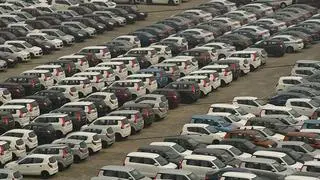India’s middle class is expanding in a big way. By 2031, it will rise to 715 million from 432 million in 2021 and bulge up to nearly 1.02 billion when India turns 100 in 2047, finds a study by independent think tank People Research on India’s Consumer Economy (PRICE), spelling exciting possibilities for those investing in India.
The study, titled The Rise of the Middle Class: A Force to Reckon With – and released on July 5 by Amitabh Kant, G20 Sherpa, economist Arvind Panagariya, Professor, Columbia University, Shiv Shivakumar, Operating Partner, Advent International, and Nikhil Ojha, Bain & Company - defines the middle class as those with an annual average household income at 2021 prices of ₹5 lakh to ₹30 lakh, and per capita per day income between ₹298 and ₹1,770.
Changing shapes
There will be a big shift in the size, shape, composition, location, and consumption patterns of India’s rich, middle class, and poor as we head into the next decade, going by the study’s findings. It notes how the structure of India‘s demographics will change from the current inverted pyramid, where-in a small rich class sits on top, followed by a bigger middle class and a huge low-income class to a diamond shape, where-in a large chunk of the poor will move into the middle class bracket.
The income demographics will be transformed, notes the report, as the percentage of those classified as destitute will fall from 14 per cent in 2020-21 to just a little over 5 per cent of the population by 2030-31.
According to Rajesh Shukla, MD & CEO of PRICE, a key theme captured in the report is how the Indian middle class grew from 14 per cent in 2004-05 to about 31 per cent in 2020-21. It is expected to grow to 47 per cent in 2030-2031 and comprise 61 per cent by 2046-47.

He said that projections are when India will become a $7.1 trillion economy by 2031, the consumption spend will be $5.2 trillion. “Rural India will play a big influencing part and will drive 55 per cent of incremental consumption,” he said.
Another key finding in the report is the geographical differences in income growth. “There is a huge disparity in income distribution with high and middle-income groups overrepresented in select states,” he said. The largest concentration of middle class is in southern and central India, but the fastest growth has taken place in central and eastern India.
Economic development
Nikhil Prasad Ojha, Partner at Bain & Company India, said that the addition of 100 million households into the middle class by 2031 would have a significant multiplier effect on consumption. Not just quantity but quality of consumption will go up with trends like premiumisation, addition of new categories and more people spending more often.
Shiv Shivakumar, operating partner at Advent International, said that so far brands have been penetration-led in their strategy, but it is time to be consumption led to garner better dividends.
“The rise of the middle class is an indication of the economic development the country has seen,” said Amitabh Kant, saying India needs to grow at high rates on a sustained basis for at least a three-decade period. “We need to fire on all cylinders – we need to grow in services, even more in manufacturing., enhance agriculture productivity and need to grow rapidly in sustained urbanisation,” he concluded.
Arvind Panagariya noted that a lot of discussion in planning circles centers around poverty. “Although the struggle at the bottom remains, this report drags the conversation to the middle class,” he noted pointing out how the idea of the middle class had shifted from a ‘social’ definition of nobility, middle class, and peasantry and evolved into an economic one. “It is revolutionary that 47 per cent of the population will comprise of middle class and 37 per cent as aspirers by 2031,” he said, describing how it would change the make up of India.








Comments
Comments have to be in English, and in full sentences. They cannot be abusive or personal. Please abide by our community guidelines for posting your comments.
We have migrated to a new commenting platform. If you are already a registered user of TheHindu Businessline and logged in, you may continue to engage with our articles. If you do not have an account please register and login to post comments. Users can access their older comments by logging into their accounts on Vuukle.